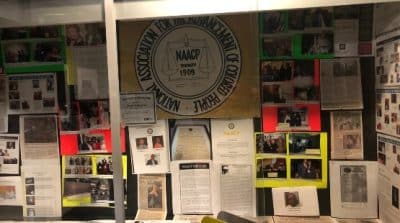
All over the world, including in some of the most destitute and water-poor countries on earth, Nestle has destroyed the drinking water that local populations depend on in order to feed its bottling operations. In Michigan, where the people of Flint still drink poisoned water, Nestle has pumped billions of gallons of groundwater since it opened its first bottling plant in 2002 — draining aquifers virtually free of charge. In drought-ridden California, where the government has imposed rationing for ordinary non-corporate citizens, it takes 80 million gallons of water a year from Sacramento, as well as tens of millions from the San Bernardino National Forest.
This human right to free water for corporate persons extends to the right to pollute the drinking water of actual humans, with impunity, as part of for-profit industrial processes like hydraulic fracking. Previously, shameless fracking apologists like Reason’s Ron Bailey celebrated the politically rewritten executive summary of an EPA report that falsely minimized the danger of water pollution (despite a considerably different concrete information in the main body of the report). And according to a new EPA report in December,
fracking has contributed to drinking water contamination… in all stages of the process: water withdrawals for hydraulic fracturing; spills during the management of hydraulic fracturing fluids and chemicals; injection of hydraulic fracturing fluids directly into groundwater resources; discharge of inadequately treated hydraulic fracturing wastewater to surface water resources; and disposal or storage of hydraulic fracturing wastewater in unlined pits, resulting in contamination of groundwater resources.
So while some may deny an individual human right to water (and never mind that aquifers and large bodies of fresh water are a natural resource commons belonging to people in the areas that rely on them), the right of corporations like Nestle to free water and other natural resources is a different matter altogether. This is in perfect keeping with what Adam Smith called the “vile maxim of the masters of mankind”: “All for us, and none for anybody else.”
Right-libertarians will sometimes condemn specific instances of such behavior as “crony capitalism.” But like all neoliberal analysis, it frames the issue as individual rather than structural. “Crony capitalism” is a problem of decisions by individual bad actors or corrupt firms or bodies (like the Export-Import Bank, every right-libertarian’s favorite example of “crony capitalism”) rather than the nature of the system.
But the problem is very much structural. Privileged access to resources isn’t just a matter of deviant individual firms working out special arrangements with the state. The overwhelming majority of current corporate property rights in fossil fuel deposits, minerals and lumber, as well as a major part of arable land, can be traced back directly to capitalist enclosure and robbery with the help of the state, or state engrossment and enclosure followed by privileged access by corporate interests.
Far from being an issue of individual “cronyist” behavior by particular corporate bad actors, capital’s collective access to artificially cheap, looted resources is a major structural feature of capitalism as an overall system. So are all the other forms of cost socialization, restraints on competition, and artificial property rights which most corporate profits depend on. If you eliminated all these structural features, root and branch, there would be nothing recognizable left.










